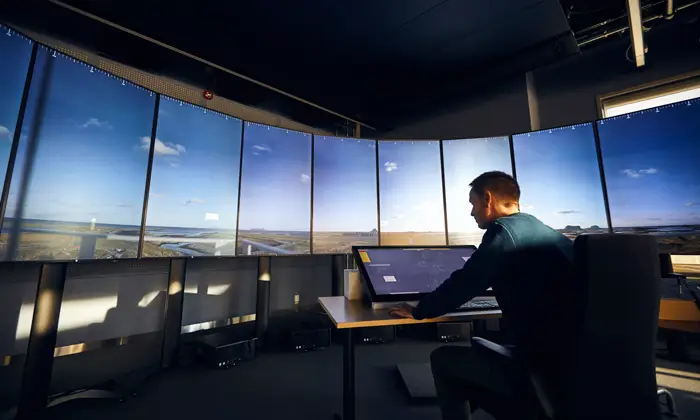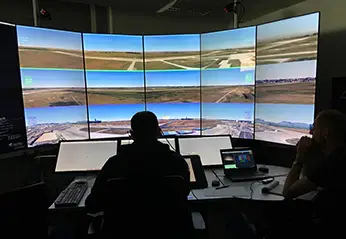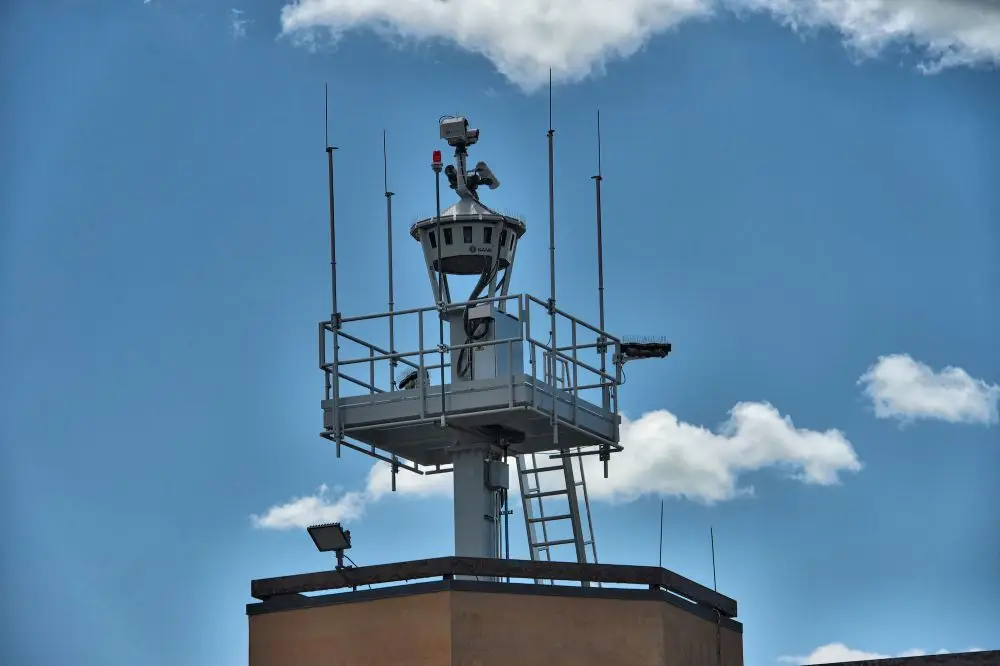
The concept of remote operations has been the subject of debates, working groups, studies and above all professional reality for a number of years. The remote tower model is already in place as a single module or as a sequential module in Remote Tower Centres. While all the emerging issues related to Remote Air Traffic Services are still under discussion, and without specific global guidelines to regulate standards, the industry is moving forward with testing multiple tower solutions.
This key-issue page is intended as a quick reference to assist Member Associations when confronted with implementation plans in their country. It includes a list of topics that they can expect to come up in discussions. Further assistance can be provided by contacting the IFATCA Remote Tower Task Force or TOC (Technical & Operations Committee).
Current Developments
Generally, the implementation is not very structured and it is not possible to define how far the implementation can go. For example, the Finnish ANSP is talking about combined low cost remote tower and approach project with licences for up to 12 aerodromes.
- Sweden has already two operational remote towers and a third one has been approved by the regulator. A Remote Tower Centre (RTC) is currently being built in Stockholm.
- Norway is planning
a RTC in Bodø, which can accommodate up to 16 AFIS and ATC units. - Germany intends to launch a RTC in Leipzig for three airports. Currently Saarbruecken (EDDR) is operated remotely from Leipzig being Erfurt (EDDE) expected as the next one.
- In the UK, Cranfield is the newest implemented remote tower in Europe.
- Hungary has a back-up(contingency) remote tower in Budapest.
- Asia is using
the remote tower technology to enhance the service in conventional towers. - In the rest of Europe and the USA, test platforms are up and running. Some countries have already included plans in
short-ter m industrial
Terminology

Mode of operations
When talking about remote operations, Member Associations should know which mode of operation is about to be implemented: contingency, single, sequential or simultaneous. The first two are self-evident.
Sequential means one-to-one working positions with a controller working only one aerodrome at a time, even if
Simultaneous operations involve one single operator is controlling more than one aerodrome at the same time. IFATCA’s current policy objects to simultaneous operations (see Safety bullet) but accepts sequential operations under certain conditions.
Items for Consideration/Discussion
Safety
- Human Factors relating issues such as new technologies, digital acquisition of data and application of separation are changing long standing paradigms of tower air traffic control and they need to be addressed. Key aspects of the job are affected, and emerging issues are still waiting to be discovered, identified and analysed.
- Increased fatigue (eyes fatigue, alarm fatigue etc.) due to a prolonged exposure to artificial light/air and digital prompts should be considered and mitigated.
- Different layouts of the airfields and orientation of the tower might have an effect. Currently, a TWR controller has a steady view (north-south for example). But different airspace configurations, procedures, meteorological conditions and other aspects, can potentially create confusion if a controller is to provide service sequentially or simultaneously in more than one facility without enough time to adapt.
- In case of sequential operations, the controller is probably expected to make an extra effort to adapt to each airport every time.
- Simultaneous operations would be highly challenging for controllers: problem solving, reasoning, situational awareness might be disturbed by disorientation and concurrent complications in the same timeframe. This is the main reason for IFATCA’s current policy to argue against this concept.
Frequency and Working Positions
The effects of different layouts of simultaneously controlled airfields have been only tested in simulators, where the impact is likely not the same as in real-life traffic handling with real responsibilities and workload. The aspects of frequency handling and working position layout needs further Human Factor analysis and testing. Multiple Remote Tower simulations also hightened the Federation’s concern about frequency congestion as the capacity on frequency may become a bottleneck.
Training
- There are still no specific indications
on conversion/transition training. No standards appear to have been defined, even in place where remote towers are operational. The same goes for on-the-job instructors and supervisors in remote towers. - Ab initio: new controllers will likely be directly trained in a digital environment. A conventional training would be useful to fall back to a traditional method of control. Experiencing the airfield live benefits the controller’s ability to assess situations, for instance in relation to relevant weather at the airfield.
License and Endorsements
No specific and globally
Technical Requirements

- Many current displays have
a that range that typically spans 240° to 270°. Having the full 360° coverage is desirable and should be part of evolving towards an improved overall view and awareness for the ATCO. - Images can be distorted due to projection of a panoramic view on a flat screen. The use of an arced arrangement of the displays to replicate a real environment without distortion is desirable.
- The refresh rate of images must be high enough to minimize the controllers having the illusion of discontinuity on the screen.
- Cybersecurity: all information relies on a digital flow of data. Maintenance and an appropriate check-list for controllers should be put in place.
Airspace
- The airspace design should be analysed and adapted where necessary, especially in case of multiple tower solution implementations.
- The presence of mixing IFR/VFR traffic at more than one aerodrome is particularly challenging to manage. Solutions based on limiting access to VFR have been proposed, but this would prioritize the needs of the service above the need of the airspace users and are therefore not recommended.
Future Scenarios
- Asia is pioneering the use of much of the technology employed in remote operations to enhance conventional towers. An obvious example is during Low Visibility Procedures (LVP). Seemingly, there is considerable reluctance to follow this approach in other regions.
Low cost concept: IFATCA is deeply concerned about this concept, as it might somehow affect the highest standard of safety and affect the workload and performance of the operator.- Mixed solutions: It is not easy to foresee the further developments of the implementations. Conventional and digital might not be strictly separated. In such potential cases, the IFATCA Remote Operations Task Force recommends clarifying all the procedural implications with specific reference to liability.
For further information, check IFATCA’s position paper on Remote Towers and the policies on the subject included in the IFATCA Technical and Professional Manual (login required).
©2019 The International Federation of Air Traffic Controllers’ Associations.
This publication is for your information only.
In all cases, ATCOs should follow their company’s guidance and procedures. In the interest of safety, reproduction in whole or in part is encouraged. All reproductions must credit IFATCA. This publication may not be sold or used commercially.




